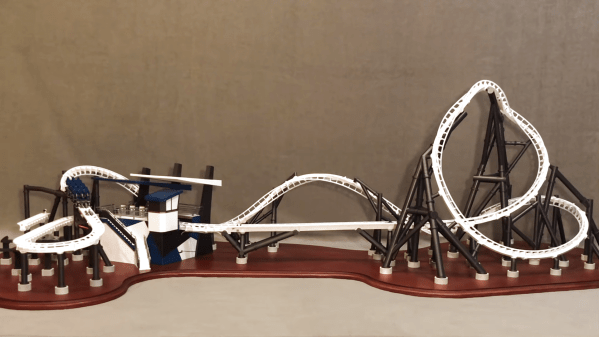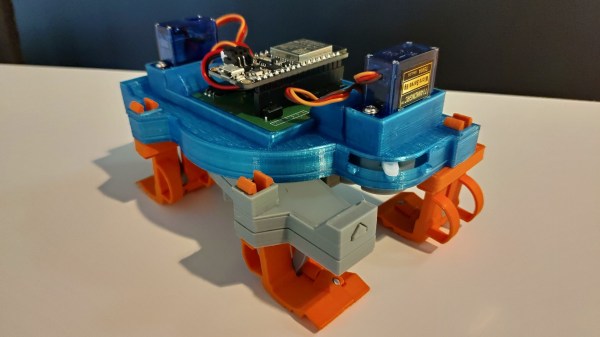Rollercoasters are great fun if you can deal with the exhilaration without throwing up or otherwise screaming until you pass out. Of course, the big outdoors ones are a little hard to get to at the moment, what with a pandemic raging outside. However, [3d_coasters] has built a tabletop design that, while it’s too small to ride, is nonetheless quite impressive. (Video, embedded below.)
The coaster is of the launch design. It relies on an elastic cord that is wound up to high tension to launch the train up to speed, with the train then coasting around the rest of the curves on the track. The quality of the modelling is highly impressive, too. The doors at the boarding platform are even actuated to simulate riders boarding the train! Everything is controlled by an Arduino, a handful of micro servos, and a DC motor.
As you might imagine, this project didn’t happen overnight. 600 hours were logged in Fusion 360 developing the track, and slicing the models in Cura for 3D printing took a further 5 hours. The actual printing process itself took 800 hours, not including finishing, so this project certainly isn’t one for the faint of heart. The final model weighs a full 30 lbs.
Believe it or not, we’ve featured 3D printed rollercoasters before, too. Video after the break.
Continue reading “3D Printed Roller Coaster Looks Pretty Darn Fun”















